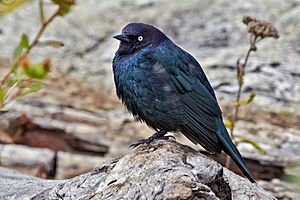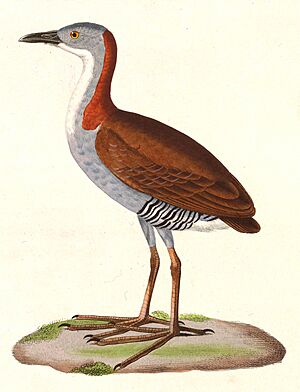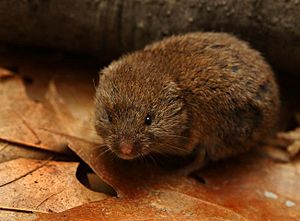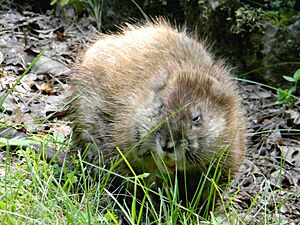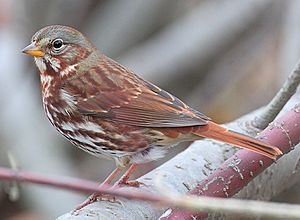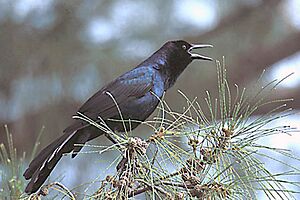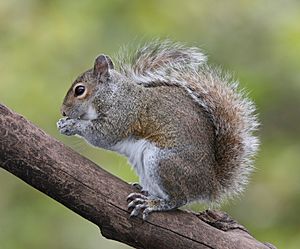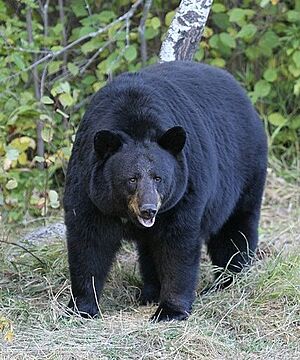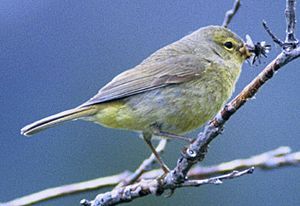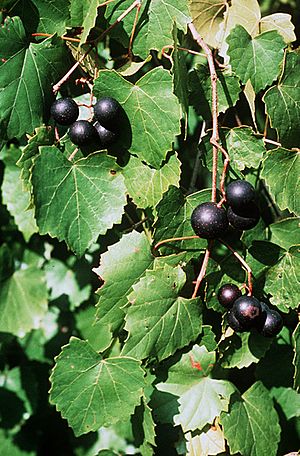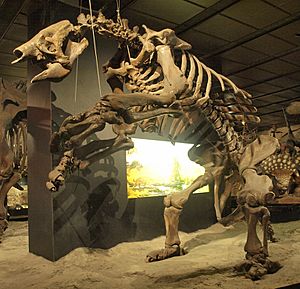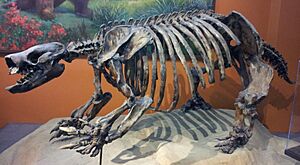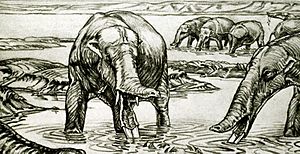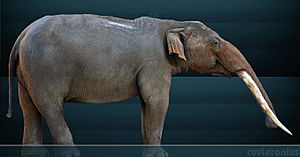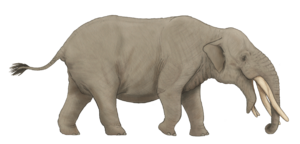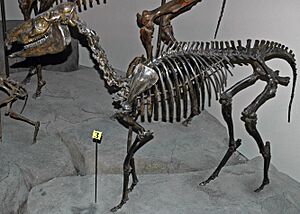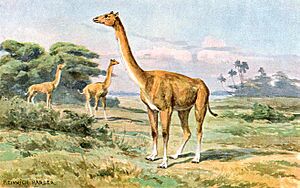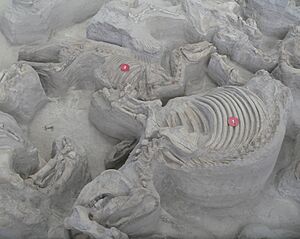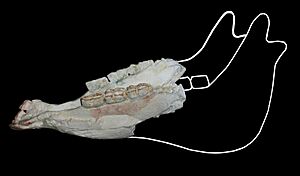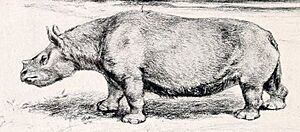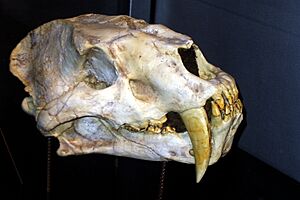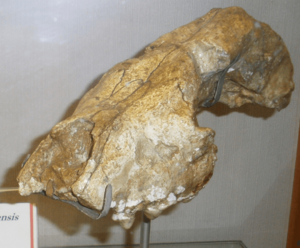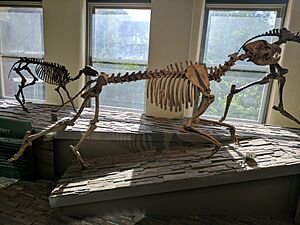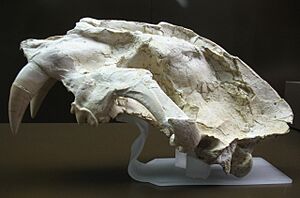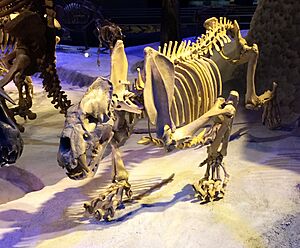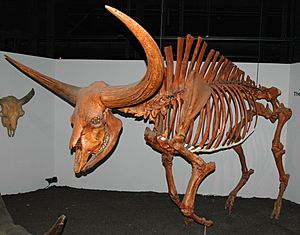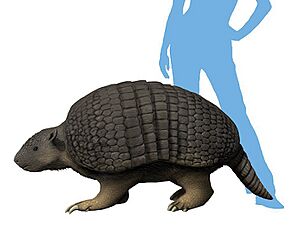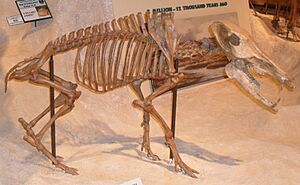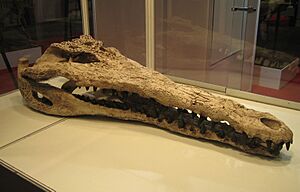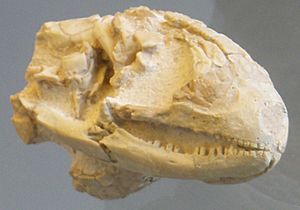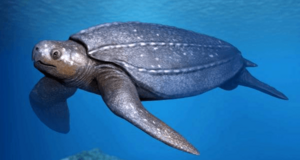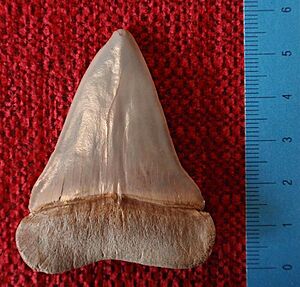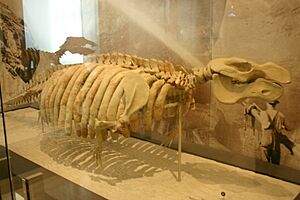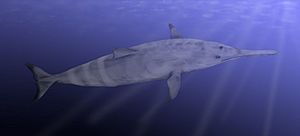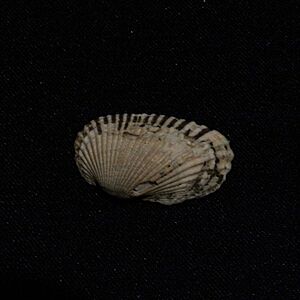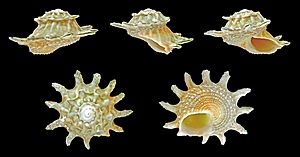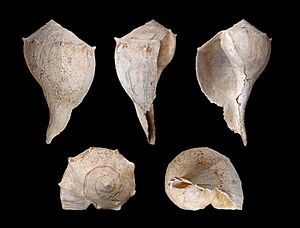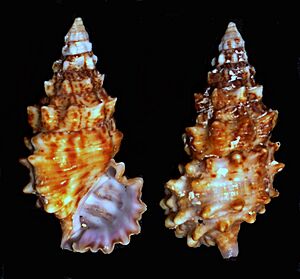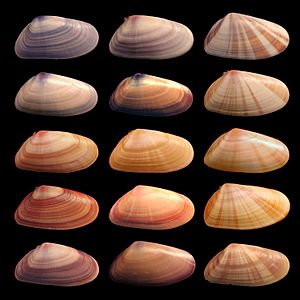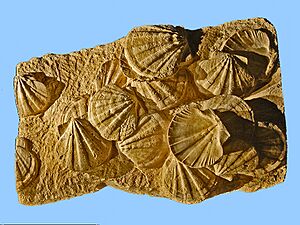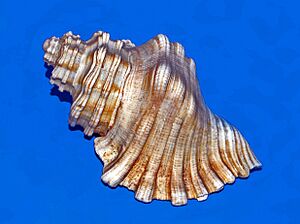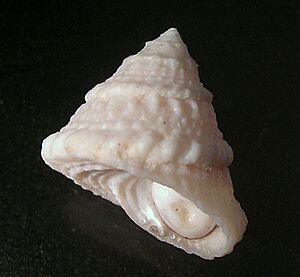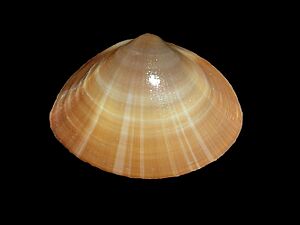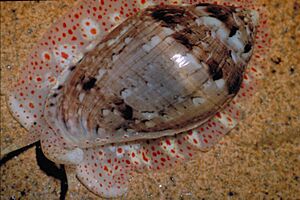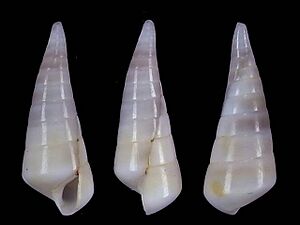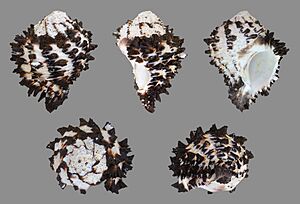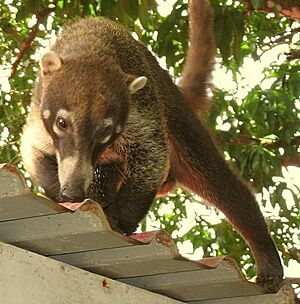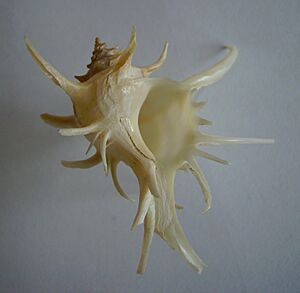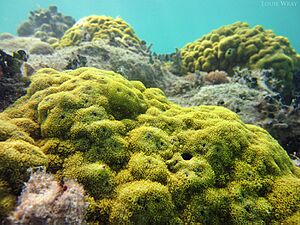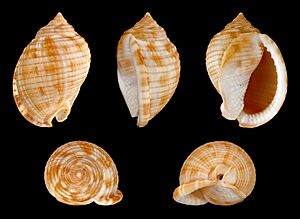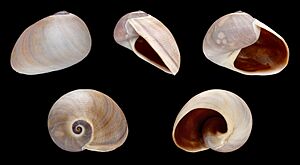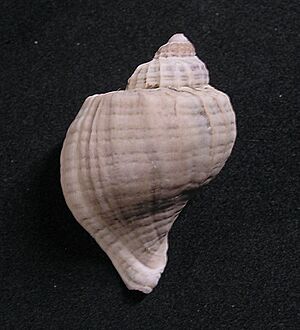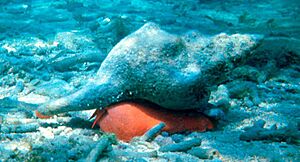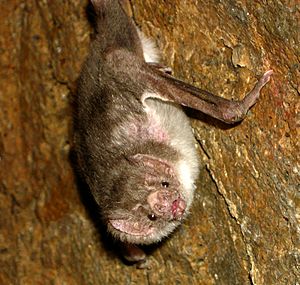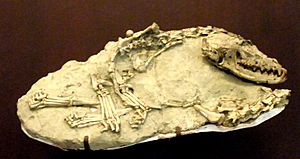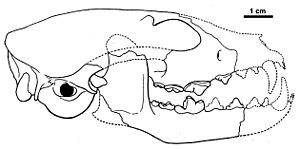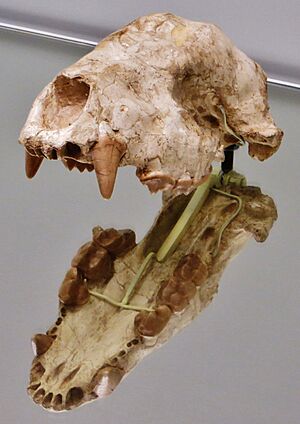List of the prehistoric life of Florida facts for kids
This article is about the amazing prehistoric creatures and plants whose fossils have been found in the US state of Florida. Fossils are like ancient clues, showing us what life was like millions of years ago! When you see a little cross symbol (![]() ) next to a name, it means that animal or plant is now extinct, so it doesn't live on Earth anymore.
) next to a name, it means that animal or plant is now extinct, so it doesn't live on Earth anymore.
Contents
Ancient Times: Paleozoic Era
The Paleozoic Era was a very long time ago, from about 541 to 252 million years ago. During this time, life on Earth was mostly in the oceans, and Florida was often covered by shallow seas. Scientists haven't found many fossils from this era in Florida, but some cool creatures have been reported.
One interesting group found are the eurypterids, also known as "sea scorpions." These were ancient relatives of spiders and scorpions, and they lived in the water. One type found in Florida is called †Pterygotus floridanus. Imagine a giant scorpion swimming in the sea!
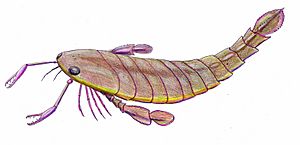
Other ancient sea creatures from the Paleozoic Era found in Florida include:
- †Actinopteria
- †Acutiramus
- †Arisaigia
- †Butovicella
- †Colpocoryphe
- †Conularia
- †Eoschizodus
- †Modiomorpha
- †Plectonotus
- †Pleurodapis
- †Prothyris
- †Pterinopecten
- †Tentaculites
The Age of Mammals: Cenozoic Era
The Cenozoic Era began about 66 million years ago and continues to this day. This era is often called the "Age of Mammals" because mammals became very common and diverse after the dinosaurs disappeared. Florida has many amazing fossils from this time, showing us a wide variety of ancient animals and plants.
Giant Mammals of Florida
Florida was once home to many huge mammals that are now extinct. Imagine giant sloths, huge beavers, and ancient elephants roaming the land!
- Giant Sloths: These were massive, slow-moving plant-eaters.
* †Eremotherium was a giant ground sloth. Its fossils show it was as big as an elephant! * †Glossotherium was another type of ground sloth. * †Megalonyx was a large ground sloth, sometimes called Jefferson's ground sloth. * †Paramylodon was also a big ground sloth. * †Nothrotheriops was a smaller, but still large, ground sloth.
- Ancient Elephants and Relatives: Florida had several kinds of elephant-like creatures.
* †Amebelodon was a type of ancient elephant with shovel-like tusks. * †Cuvieronius was another elephant relative that lived in warmer climates. * †Gomphotherium were early elephant relatives. * †Mammut americanum, the American mastodon, was a large, hairy elephant-like animal. * †Mammuthus columbi, the Columbian mammoth, was a huge, shaggy mammoth. * †Platybelodon was an elephant relative with a flattened, shovel-like lower jaw. * †Rhynchotherium was another ancient elephant relative.

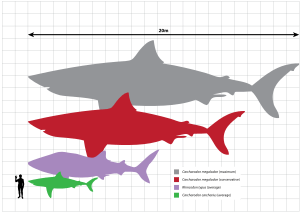

- Ancient Horses and Camels: Florida had many types of horses and camels.
* †Acritohippus was an ancient horse. * †Aepycamelus, or the long-necked camel, was a very tall camel. * †Anchitherium was a three-toed horse. * †Calippus was another ancient horse. * †Camelops was a camel that lived in North America. * †Cormohipparion was a horse that lived during the Miocene and Pliocene epochs. * †Dinohippus was a horse that looked very similar to modern horses. * †Equus includes several species of ancient horses. * †Hipparion and †Hippotherium were also ancient horses. * †Merychippus was a horse that grazed on grass. * †Nannippus was a small, three-toed horse. * †Neohipparion was another three-toed horse. * †Parahippus was an early horse that could eat both leaves and grass. * †Pliohippus was a one-toed horse, very similar to modern horses. * †Protohippus was an early horse. * †Teleoceras was a rhinoceros that lived in Florida.
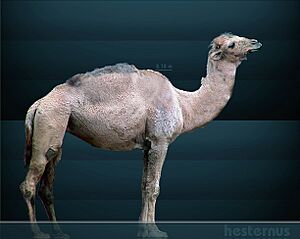
- Saber-toothed Cats and Other Predators: Florida had many fierce predators.
* †Amphimachairodus was a large saber-toothed cat. * †Borophagus was a "bone-crushing dog" that hunted large prey. * †Chasmaporthetes was a hyena that lived in North America. * †Epicyon was another bone-crushing dog. * †Homotherium was a saber-toothed cat with long, flat teeth. * †Machairodus was a large saber-toothed cat. * †Miracinonyx, the American cheetah, was a fast predator. * †Nimravides was a saber-toothed cat. * †Smilodon, the famous saber-toothed cat, hunted large mammals. * †Xenosmilus was a unique saber-toothed cat with very powerful limbs.
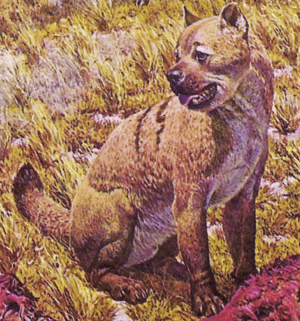

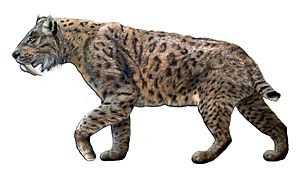
- Other Large Mammals:
* †Arctodus, the short-faced bear, was one of the largest bears ever. * †Bison antiquus and †Bison latifrons were ancient bison, with B. latifrons being a giant bison with huge horns. * †Castoroides, the giant beaver, was as big as a black bear! * †Holmesina was a large armadillo relative. * †Mylohyus was a peccary, similar to a wild pig. * †Pachyarmatherium was another armadillo-like animal. * †Tapirus includes several species of ancient tapirs.
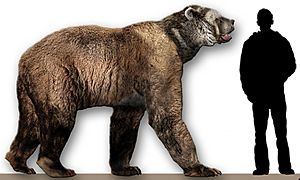
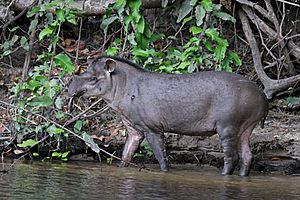
Birds and Reptiles of the Past
Florida's warm climate has always been perfect for many birds and reptiles, and their fossils tell us about ancient species.
- Birds:
* †Ajaia ajaja, the roseate spoonbill, is a beautiful wading bird. * †Ciconia maltha, the asphalt stork, was a large stork. * †Ectopistes migratorius, the passenger pigeon, was once very common but is now extinct. * †Gymnogyps californianus, the California condor, is a very large vulture. * †Jabiru mycteria is a large stork. * †Pelecanus schreiberi was an ancient pelican. * †Phoenicopterus ruber, the American flamingo, is a colorful wading bird. * †Pica pica, the Eurasian magpie, is a smart bird. * †Titanis walleri, a "terror bird," was a huge, flightless predator.
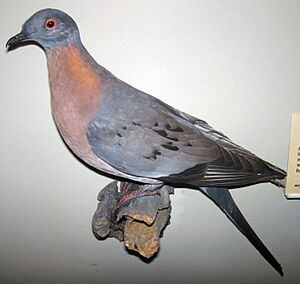

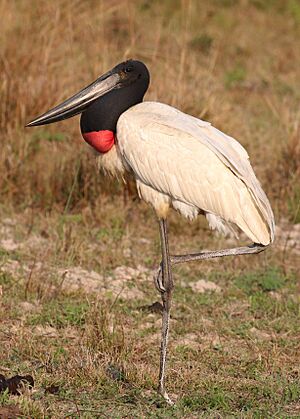
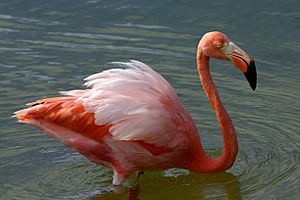
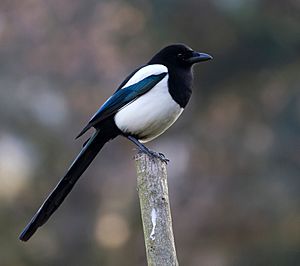
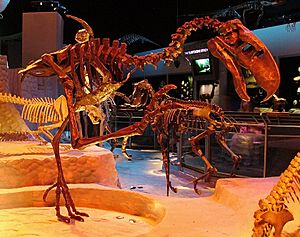
- Reptiles and Amphibians:
* †Alligator mississippiensis is the modern American alligator, but ancient species like †Alligator olseni also lived here. * †Apalone ferox, the Florida softshell turtle, is still found today. * †Caretta caretta, the loggerhead sea turtle, is a large sea turtle. * †Chelonia mydas, the green sea turtle, is another large sea turtle. * †Chelydra serpentina, the common snapping turtle, is a freshwater turtle. * †Crotalus adamanteus, the eastern diamondback rattlesnake, is a venomous snake. * †Gavialosuchus americanus was a large crocodile relative. * †Gopherus polyphemus, the gopher tortoise, is a land tortoise. * †Hesperotestudo was a giant land tortoise. * †Psephophorus was an ancient sea turtle. * †Siren hesterna and †Siren simpsoni were ancient salamanders. * †Trachemys scripta, the pond slider, is a common freshwater turtle.

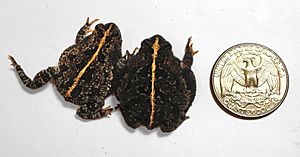
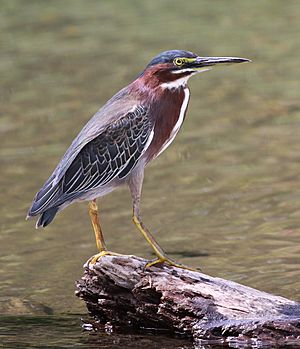
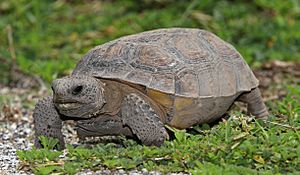
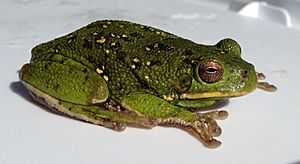

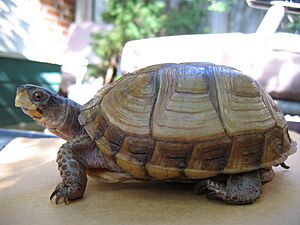
Marine Life in Ancient Florida
Florida's long coastline means many marine fossils have been found, from tiny shells to huge sharks and whales.
- Sharks and Rays:
* †Carcharhinus includes several species of ancient requiem sharks. * †Carcharias taurus, the sand tiger shark, is still alive today. * †Carcharodon carcharias, the great white shark, also has ancient relatives. * †Otodus megalodon, often called Megalodon, was the largest shark that ever lived! * †Galeocerdo cuvier, the tiger shark, is a large modern shark. * †Hemipristis serra was a large extinct shark. * †Isurus oxyrinchus, the shortfin mako shark, is a fast-swimming shark. * †Notorynchus, the broadnose sevengill shark, is an ancient shark type. * †Rhizoprionodon terraenovae, the Atlantic sharpnose shark, is a small shark. * †Sphyrna includes various hammerhead sharks. * †Striatolamia was an ancient sand shark.

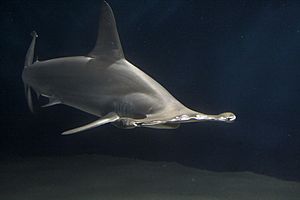

- Whales and Dolphins:
* †Balaenoptera acutorostrata, the common minke whale, is a baleen whale. * †Basilosaurus was a very long, snake-like whale from the Eocene. * †Cynthiacetus was another ancient whale. * †Globicephala macrorhynchus, the short-finned pilot whale, is a type of dolphin. * †Lophocetus was an ancient whale. * †Metaxytherium was an ancient manatee relative. * †Piscobalaena was an ancient baleen whale. * †Squalodon was a "shark-toothed dolphin." * †Trichechus manatus, the West Indian manatee, is a gentle marine mammal. * †Tursiops includes bottlenose dolphins.
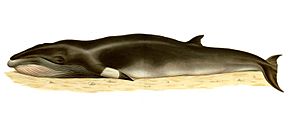
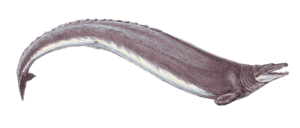
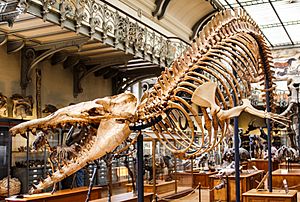

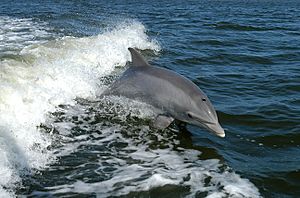
- Shells and Corals: Florida's waters were full of diverse shells and corals.
* Acropora includes elkhorn and staghorn corals. * Aequipecten and Argopecten are types of scallops. * Anadara are ark clams. * Astralium are star sea snails. * Busycon and Fulguropsis are types of whelks. * Calyptraea are slipper shells. * Cerithium are cerith sea snails. * Chama are jewelbox clams. * Chicoreus and Muricanthus are murex sea snails. * Conus are cone snails, some of which are venomous. * Crepidula are common slipper shells. * Dinocardium are giant cockles. * Donax variabilis, the coquina, is a small colorful clam. * Ecphora are extinct marine snails known for their unique spiral ribs. * Favia and Porites are types of stony corals. * Gigantopecten was a very large scallop. * Laevicardium are cockles. * Lithopoma are turban sea snails. * Lobatus are large conchs. * Melongena are crown conchs. * Mercenaria are quahog clams. * Millepora are fire corals. * Modiolus are horse mussels. * Nassarius are mud snails. * Oliva are olive snails. * Ostrea are true oysters. * Petaloconchus are worm shell sea snails. * Plicatula are kittenpaws. * Semicassis granulata, the Scotch bonnet, is a type of sea snail. * Siderastrea are starlet corals. * Strombus are true conchs. * Terebra are auger snails. * Triplofusus giganteus, the Florida horse conch, is the largest snail in North America. * Turritella are tower snails. * Xenophora are carrier shells, known for attaching other shells to themselves.
Plants and Smaller Creatures
Even tiny creatures and plants leave behind fossils, helping us understand ancient ecosystems.
- Plants:
* †Acer rubrum, the red maple, is a common tree. * †Alnus is a type of alder tree. * †Benzoin is a type of shrub. * †Brasenia is a water shield plant. * †Carya is a type of hickory tree. * †Castanea is a chestnut tree. * †Corylus is a hazelnut tree. * †Ilex glabra, the inkberry, is a shrub. * †Leitneria floridana, the corkwood, is a small tree. * †Liquidambar, the sweetgum, is a common tree. * †Magnolia virginiana, the sweetbay magnolia, is a flowering tree. * †Myrica cerifera, the wax myrtle, is a shrub. * †Nyssa, the tupelo, is a tree often found in wetlands. * †Pinus includes various pine trees like the Caribbean pine and loblolly pine. * †Pistia, water lettuce, is an aquatic plant. * †Quercus includes various oak trees. * †Ruppia, ditch grass, is an aquatic plant. * †Sabal palmetto, the cabbage palm, is Florida's state tree. * †Sciadopitys, the Japanese umbrella pine, is an ancient conifer. * †Serenoa serrulata, the saw palmetto, is a common Florida plant. * †Stewartia floridana is a type of camellia. * †Taxodium distichum, the bald cypress, is a wetland tree. * †Thalassia testudinum, turtle grass, is a type of seagrass. * †Viburnum is a genus of shrubs. * †Vitis rotundifolia, the muscadine grape, is a native grape vine.
- Smaller Mammals:
* †Agnotocastor was an ancient beaver. * †Blarina includes short-tailed shrews. * †Cryptotis parva, the least shrew, is a tiny mammal. * †Dasypus bellus, the beautiful armadillo, was an extinct armadillo. * †Desmodus stocki was an ancient vampire bat. * †Dipoides was an ancient beaver. * †Erethizon dorsatum, the North American porcupine, is a rodent. * †Eptesicus fuscus, the big brown bat, is a common bat. * †Geomys pinetis, the southeastern pocket gopher, is a burrowing rodent. * †Hydrochoerus includes capybaras, the largest living rodents. * †Hypolagus was an ancient rabbit. * †Lasiurus includes various bat species. * †Lepus townsendii, the white-tailed jackrabbit, is a large hare. * †Microtus includes voles. * †Mormoops megalophylla, the ghost-faced bat, is a bat with a unique face. * †Musculium and †Musculus are types of mussels. * †Myotis includes various bat species. * †Neofiber alleni, the round-tailed muskrat, is a rodent. * †Ochrotomys nuttalli, the golden mouse, is a small rodent. * †Ondatra zibethicus, the muskrat, is a semi-aquatic rodent. * †Oryzomys palustris, the marsh rice rat, is a rodent found in wetlands. * †Peromyscus includes deer mice and cotton mice. * †Pipistrellus subflavus, the eastern pipistrelle, is a small bat. * †Podomys floridanus, the Florida mouse, is a native rodent. * †Procyon lotor, the raccoon, is a common mammal. * †Sigmodon hispidus, the hispid cotton rat, is a rodent. * †Sylvilagus includes cottontail rabbits and marsh rabbits. * †Synaptomys includes bog lemmings. * †Tamias aristus was an ancient chipmunk. * †Thomomys includes pocket gophers. * †Urocyon cinereoargenteus, the gray fox, is a fox species. * †Ursus americanus, the American black bear, is a large mammal. * †Vulpes vulpes, the red fox, is a common fox species. * †Zapus includes jumping mice.
